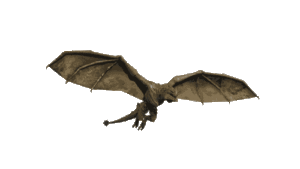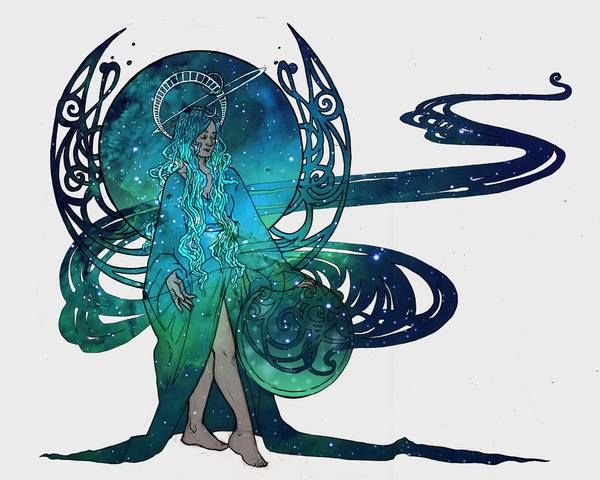


Sami shamanism
| This article needs additional citations for verification. Please help improve this article by adding citations to reliable sources. Unsourced material may be challenged and removed.(March 2016) (Learn how and when to remove this template message) |

Sami shamanic drum in the Arctikum museum, in Rovaniemi, Finland
Sami shamanism is shamanism as practiced by the Sami people. Though they vary considerably from region to region within Sápmi, traditional Sámi beliefs consist of three intertwining elements: animism, shamanism and polytheism. Animism is manifested in the Sámi belief that all significant natural objects (such as animals, plants, rocks, etc.) possess a soul, and from a polytheistic perspective, traditional Sámi beliefs include a multitude of spirits.[1] Sami religion commonly emphasizes veneration of the dead and of animal spirits such as bear worship. The study of Sámi religion is also based on archaeological remains and written sources from missionary work in northern Scandinavia from the Middle Ages to as late as the early 18th century, though some of the knowledge exists as family oral tradition.
Contents
[hide]
Animal spirits[edit]
Aside from the Bear Cult, there are other animal spirits such as the Haldi who watched over nature. Some Sami people had a thunder god called Tiermes, sometimes called Horagalles. Radien or Vearalden was a sky-ruling god. The symbol of the world tree or pillar similar in Finnish mythology that reached up to the North star was marked by a stytto.[2]
The forest-god of the Sami, Laib olmai ruled over all forest animals, which were regarded as his herds, and luck in hunting, or the reverse, depended on his good will. His favour was so important that, according to one author, they made prayers and offerings to him every morning and evening.[3]
Sieidis[edit]
In the landscape throughout Northern Scandinavia, one can find sieidis, places that have unusual land forms different from the surrounding countryside. Sami shamanism considers these spiritual 'focal points' and worships them as gateways to the spirit world. At these sieidis, sacrifices were made, of animals and objects, and archaeologists have found "Samic metal depots" (due to the large numbers of metal objects) dating back to 9th-14th centuries. These objects are mostly coins from medieval Germany and England, weapons parts such as arrow-heads, and other minor findings such as antler from reindeer.
The clan and family gods of the Sami are known in different parts of Sapmi under the name of Seita, Sieidis or Storjunkare. Each family or clan has its Storjunkare standing in the district where they live. Every Sami settlement has its seita, which has no regular shape, and might consist of smooth or odd-looking stones picked out of a stream, of a small pile of stones, of a tree- stump, or of a simple post. They were set up on a high, prominent place, or in a rich meadow. Under and round such seitas they strewed green fir twigs in winter, and in summer green leaves. The seitas protected their worshippers against misfortune to the herds of reindeer, gave instructions how to catch wild reindeer, and in return offerings were made to them of the hides and hoofs of reindeer, calves, and sometimes of a dog. But a private person might also have his own seita, to whom he prays for good luck. The Storjunkare are described sometimes as stones, having some likeness to a man or an animal, that were set up on a mountain top, or in a cave, or near rivers and lakes. Honor was done to them by spreading fresh twigs under them in winter, and in summer leaves or grass. The Storjunkare had power over all animals, fish, and birds, and gave luck to those that hunted or fished for them. Reindeer were offered up to them, and every clan and family had its own hill of sacrifice.[4]
Noaide[edit]
A noaidi was a mediator between the human world and saivo, the underworld, for the least of community problems. The noaidi used a Sami drum and a domestic flute called a "fadno" in ceremonies. The traditional Sami joik was used in ceremonies where a noaidi fell into a trance, left their body and transcended to "saivo", where they negotiated with gods, spirits and forefathers to improve the fate of their group. As with other circumpolar religions, the Sami religion also has a hunting ceremony as part of bear worship. Males confessed to sacrificial male gods, and females to female fertility gods. Sacrifice of animals and metal objects was also included in some religious ceremonies. White animals (white reindeer, cows, sheep, etc.) played an important role.
Elements of Norse mythology as well as Christian ideas are found in the later practices. Viking-era Norse beliefs and practices demonstrate significant influence by the practices of their Uralic-speaking neighbors, including the Sámi and the Finns, as well.
Sámi peoples in northern Scandinavia today belong to Christian churches. During recent years, there has been a movement in some churches to encourage the use of the Sami languages and culture to express believers' faith. Official Sámi bodies exist today in the Lutheran Church of Sweden and Church of Norway, as well as in the Mission Covenant Church of Sweden.
Ancestors[edit]
One of the most irreconcilable elements of the Sámi’s worldview from the missionaries’ perspective was the notion “that the living and the departed were regarded as two halves of the same family.” The Sámi regarded the concept as fundamental, while the Christians absolutely discounted any possibility of the dead having anything to do with the living.[5] Since this belief was not just a religion, but a living dialog with their ancestors, their society was concomitantly impoverished.[6]
Deities[edit]
|
|
This section includes a list of references, but its sources remain unclear because it has insufficient inline citations. Please help to improve this section by introducing more precise citations. (January 2017) (Learn how and when to remove this template message) |
Following are a list of Sámi divinities and spirits:[7]
- The Akka goddesses, including:
- Jabme-Akka "akka/old woman of the dead", ruler of the underworld
- Maderakka, the first Akka, was mother of the tribe, goddess of women and children, she who gives humans their bodies; women belong to her and boys belong to her until they were declared men. Maderakka is popular among modern Sámi feminists.
- Maderakka's three daughters:
- Sarakka was the goddess of fertility, menstruation, love, sexuality, pregnancy and childbirth and the most important goddess.
- Juksakka "Akka with an Arrow" - the protector of children
- Uksakka - she shapes the fetus in the mother's womb and assigns humans their sex.
- Raedieahkka - Wife of Radien-attja.
- Beaivi - goddess of the Sun, mother of humankind.
- Beaivi-nieida - goddess of healing and medicine; her name means "Daughter of the Sun" or "Maiden of the Sun", and she was especially helpful against sicknesses caused by her mother, the sun.
- Bieggagallis - god of storms, father of humanity, consort of Beaivi.
- Bieggolmai "Man of the Winds"- god of the summer winds.
- Biegkegaellies - God of the winter winds.
- Horagalles - thunder god whose name means "Thor-man", also called "Grandfather", Bajanolmmai, Dierpmis, or Tordöm.
- Ipmil "God" - adopted as a native name for the Christian God (see the related Finnish word Jumala), it refers originally to Radien-attje or Waralden Olmai, the creator of the world and head divinity; in Sámi religion, he is passive or sleeping and is not included in religious practices often.
- Lieaibolmmai - God of the hunt, the god of adult men.
- Maderatja - father of the tribe, husband of Maderakka; while she gives humans their body and sex, he gives them their soul and gender. He lives in the sky below the sun.
- Mano, Aske or Manna - god of the moon.
- Mubpienålmaj - "The evil one"; possibly the Christian devil, but term including all evil deities.
- Rana Niejta "the daughter of the green, fertile earth" - daughter of Raedie.[8] Rana "green; fertile earth" was a popular name for Sámi girls.
- Radien-pardne - son of Radien-attje and Raedieahkka.
- Ruohtta - god of sickness and therefore also a death-god. He was depicted riding on a horse.
- Stallo - feared cannibal giants of the wilderness.
- Tjaetsieålmaj - The men of water.
See also[edit]
References and notes[edit]
- Jump up^ Holloway, Alan “Ivvár”. "The Decline of the Sámi People’s natham Religion". TexasU.
- Jump up^ Leeming, pp. 135
- Jump up^ Pre- and Proto-historic Finns by Abercromby, pp. 161
- Jump up^ Pre- and Proto-historic Finns by Abercromby, pp. 163-164
- Jump up^ Rydving, Håkan (1993). The End of Drum-Time: Religious Change among the Lule Saami, 1670s-1740s. Uppsala: Almqvist & Wiksell International.
- Jump up^ Holloway, Alan “Ivvár”. "The Decline of the Sámi People’s Indigenous Religion". TexasU.
- Jump up^ 1. Herman Hofberg, "Lapparnas Hednatro" (The Pagan belief of the Sami)
2. Uno Holmberg, "Lapparnas religion" (The faith of the Sami)
3. Rafael Karsten, " Samefolkets religion" (The Sami religion)
4. Edgar Reuteskiöld, " De nordiska samernas religion" (The religion of the Northern Sami) - Jump up^ Donner, Otto (1876). "Lieder der Lappen - Lappalaisia lauluja". Suomi-sarjan Toinen Jakso, 2 Oso: 13.
- Abercromby, John (1898). Pre- and Proto-historic Finns. D. Nutt.
- Leeming, David Adams (2003). European Mythology. Oxford University Press. pp. 133–141 Finnic and Other Non–Indo–European Mythologies. ISBN 9780195143614.
External links[edit]
- Folklore, Boundaries and Audience in The Pathfinder (a film review by Thomas A. DuBois in SamiCulture) University of Texas
- The Sámi people Nordic FAQ
- Folktales of Meandash, the mythic Sami reindeer Folklore.ee
- Sieidi Encyclopaedia of Saami Culture University of Helsinki
- The Sacred Encyclopaedia of Saami Culture University of Helsinki
